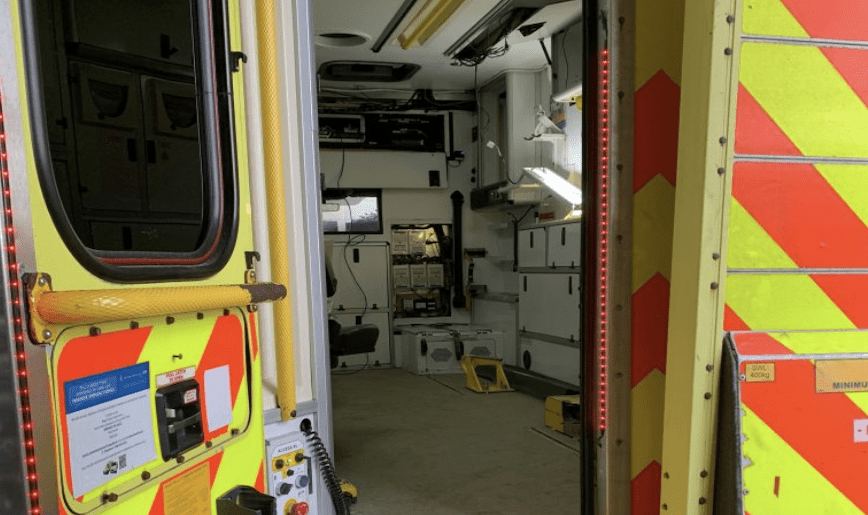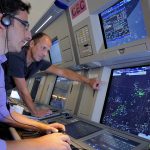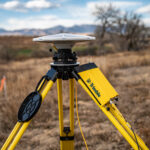A connected ambulance demonstrator develops a multitude of communications options on board, in preparation for a full healthcare connectivity development and test center in the UK. The Health Living Lab at Westcott integrates a range of communications technology into demonstrator ambulances and into healthcare pathways more broadly, testing new ways of providing healthcare services. It relies heavily on connectivity, specifically satellite and terrestrial comms of 5G and 4G, empowered and enabled by GPS.
Satellite Applications Catapult, a technology and innovation company, purchased an ambulance and refitted it with communications technology throughout, with a range of antennae on the roof. The ambulance currently carries the following equipment and network receivers:

Satellite communications. Several different satellite terminals are deployed on the roof of the ambulance to provide connectivity to rural areas or locations where there is poor coverage from cellular networks, as satellite communications can provide truly global coverage. Each satellite terminal deployed on the ambulance differs in throughput capabilities and data plans, and aim to target different end-user demands and requirements considering connectivity and cost.
Terrestrial communications. Both 4G and 5G terminals ride on the ambulance. A novel 4G antenna system can track the best 4G signal, improving coverage and data rate, and is 4G emergency services-ready when the required network is launched in 2021. The 5G connectivity is complementary to the 4G, offering much greater bandwidths that connected ambulances will need in the future. Terrestrial communications are ideal for urban areas, with 4G offering voice and some data and the 5G networks offering further opportunities such as multiple HD camera feeds, Internet of Things inventory management and the ability for the use of high definition scanning equipment to be used at the scene.
Local connectivity. Wi-Fi is also incorporated into the ambulance to provide a hotspot bubble of connectivity within range of the vehicle. This could be used, for example, when attending an incident and requiring connectivity from inside a patient’s home or outside at a distance away from the ambulance, allowing patients to be assessed and treated without the need to move them.
GPS. Gary Wade, solutions architect for Satellite Applications Catapult, provided the following description. “Each of the satellite antennas are steerable, so they use in-built GNSS receivers to give them position of the vehicle relative to the satellite making sure they start searching in the right direction. Also one of the terminals has a VSAT modem, which needs precise timing to ensure it is synchronized with the hub, as VSAT works on a Time Division Multiple Access (TDMA) architecture, so hundreds/thousands of terminals can access the internet in turn.
“We also have a separate GPS distribution system into the ambulance as with the other emergency services vehicles there is more and more digitally and comms enabled equipment being utilised. Even a police car needs 10+ GPS connections and an ambulance going forward may need up to 50! To that end I currently have a GPS antenna with a 8 way splitter, but due to splitting losses and size of splitters – we have been working on possibility of using RF over Fibre to distribute the signal around the ambulance as this can be achieved with no loss.
“We will post lock-down be developing these ideas further and others with UK business within our Living Lab – where we will be bringing NHS teams, communications and medical equipment providers together to jointly work on redefining care pathways on stroke where time critical care is vital and frailty in the community – where it is best patients do not get taken or admitted to hospital, as sadly many of them never return home.
“In addition to the Living Lab at our Westcott site near Aylesbury we also have a 5G test bed, where as you know PNT is critical – so maybe worth discussing that in conjunction with the Living Lab, it is a private network at present – but we will hopefully be announcing a major network providers participance in the Living Lab in the autumn.”
Additional technology will continue to be considered for new adaptions and enhancements to the Health Living Lab offering, with the end goal of having a facility that offers trials as a service and a development environment for health and social care communications solutions.
The ambulance technologies on test will improve communications capabilities between ambulance services and hospitals. This will help to improve the healthcare system throughout the UK as response times improve, enabling more patients to be cared for within a shorter time and freeing up critical to deal with the increasing healthcare demands.






